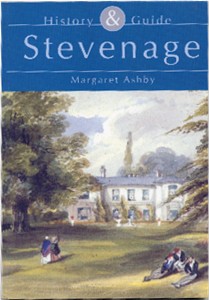History & Guide
Stevenage
Margaret Ashby
Tempus, 2002
Paperback, 25*17 cm, 128 pages, with many pictures and maps, plus 16 pages of colour photographs
| The recorded history of Stevenage began over 1,000 years ago when a small Saxon village clustered around the church of St Nicholas was entered in William the Conqueror's Domesday Book as
'Stigenace'. Over the following centuries, Stevenage evolved gradually, from medieval market town, with its own charter fair, to coaching stop on the Great North Road, to country town on the Great Northern Railway
within easy commuting distance of London.
The year 1946 saw the beginning of abrupt and overwhelming change when this community of some 6,000 people, together with the village of Shephall, was designated Britain's first post-war New Town, with a projected population of 60,000. Fifty years of unprecedented growth followed: new houses, schools, roads, industries and a pedestrian town centre were built and Stevenage now has the status of a borough. This second edition of Stevenage: History & Guide has been extensively revised, with many new illustrations including some in colour, and has an additional chapter on Shephall village. The walking tour shows visitor and resident alike how the history of the town can still be traced through its existing; streets and buildings.from the dust jacket |
CONTENTS: The Romans; Saxons, Danes & Normans; The Middle Ages; Tudors & Stuarts; The Eighteenth Century - Coaches and Coffins; The Nineteenth Century; The Twentieth Century - War and Peace; Shepall Village; New Stevenage; The Walking Tour.

Map of Stevenage in 1750
This is a well presented book which will provide the genealogist with useful background about the town's history. It to see a book which includes a good bibliography, and the index contains a large number of personal names.
There is a web page for Stevenage
| Locating
Books At the time this page was last updated new and second hand copies could be ordered online |
Page updated November 2006
